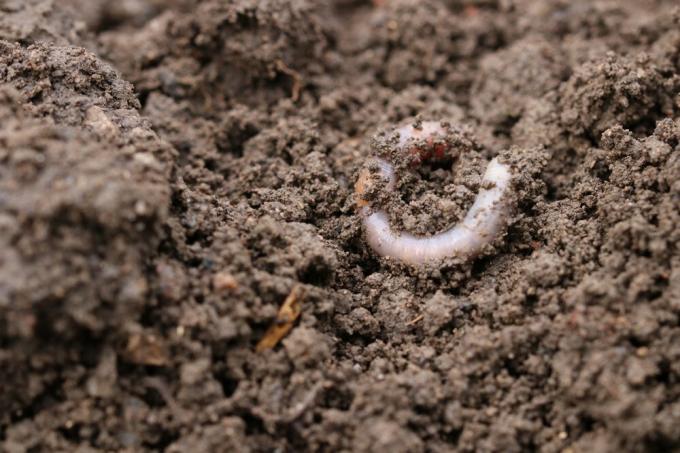
table of contents
- causes
- Lawn worms
- Damage image
- Fight
- worms
- Damage image
- Remove the earth pile
Small heaps of earth appear on the well-tended race or if larger, dark spots arise, then this can be earthworms or turfworms in addition to ants. If earthworms are fundamentally an enrichment for the garden soil, lawn or meadow worms are always harmful. In the following article we took a closer look at the two different types of worms.
causes
Lawn worms
Lawn worms, or meadow worms, are the larvae of the Wiesenschnakealso known as Tipula larvae. These are worms up to 4 cm in size that can seriously damage the lawn in the event of a mass infestation. The worms have the following additional properties:
- cylindrical
- gray-brown
- live in the sward
- cannot be seen with the naked eye
- nocturnal

Damage image
Once the meadow schnake laid its eggs in the meadow in September, the lawn worms hatch about six weeks later. But the actual damage only becomes apparent in the following year in April and May, as the worms only become really active then. Here is what happens:
- Grasses are eaten away just above the ground
- the roots are also damaged
- the surface dies
- there are large, round holes in the lawn
Fight
If the lawn has been attacked by the meadow snake, they come back to lay their eggs every year. Therefore, the larvae must be controlled, otherwise the lawn cannot be saved. A regularly cared for lawn usually has enough resistance, so the following care is essential so that lawn worm larvae cannot be deposited in the first place:
- liming regularly
- scarify
- Work the lawn with a spiked roller

If the lawn was nevertheless infested, then you can Nematodes can be used against meadow worms. The roundworms that are added to the turf soil with the irrigation water feed on the larvae. If they are no longer supplied with food, they die of their own accord. Another method is to lure the lawn worms out of the sward with a mixture of sugar and moist wheat bran. If the larvae leave the shelter, they can be collected.
worms
Everyone knows earthworms. These are articulated or annelid worms, of which there are around 3,000 different species worldwide. In the local latitudes, the common earthworm or dewworm is particularly well known. This has the following properties:
- about 9 to 15 cm long
- can be up to 30 cm long in exceptional cases
- Thickness of about one centimeter
- white, brown or gray color
- there are ringlets along the body
- Sunlight dries out the animals
- therefore live in the ground
- appear in rain and damp weather
- form small heaps of earth
- this is feces
Because the animals mostly spend their phases of life in the garden soil, they loosen it up underground. The small piles of earth are created at the entry holes.
Damage image
There is actually no real damage to the lawn itself. Because the worms feed on parts of plants that are already dead and rotten. They sort of clear up the soil around the sward. But many hobby gardeners perceive the mounds of earth that this creates on the well-tended lawn as disturbing, rather than seeing the benefits of the animals. Because this is not a real damage. So the worms and the little heaps have the following To use:
- Earth is naturally recycled
- worm humus is produced
- this supplies the earth with new nutrients
- Lawn becomes lush green and strong in summer
Remove the earth pile
If you are bothered by the many piles of earth on your smooth lawn, you can remove them. Because the piles of earth are the excrement of the worms, but that with many Nutrients is enriched for the soil. The piles in the meadow can be removed as follows:
- take off with a small shovel
- use as fertilizer for other garden beds
- scarify the lawn
- so small heaps are flattened by themselves

Hobby gardeners with a natural garden and a meadow instead of a well-tended English lawn will be happy about small heaps of earth in the meadow and leave them there.

